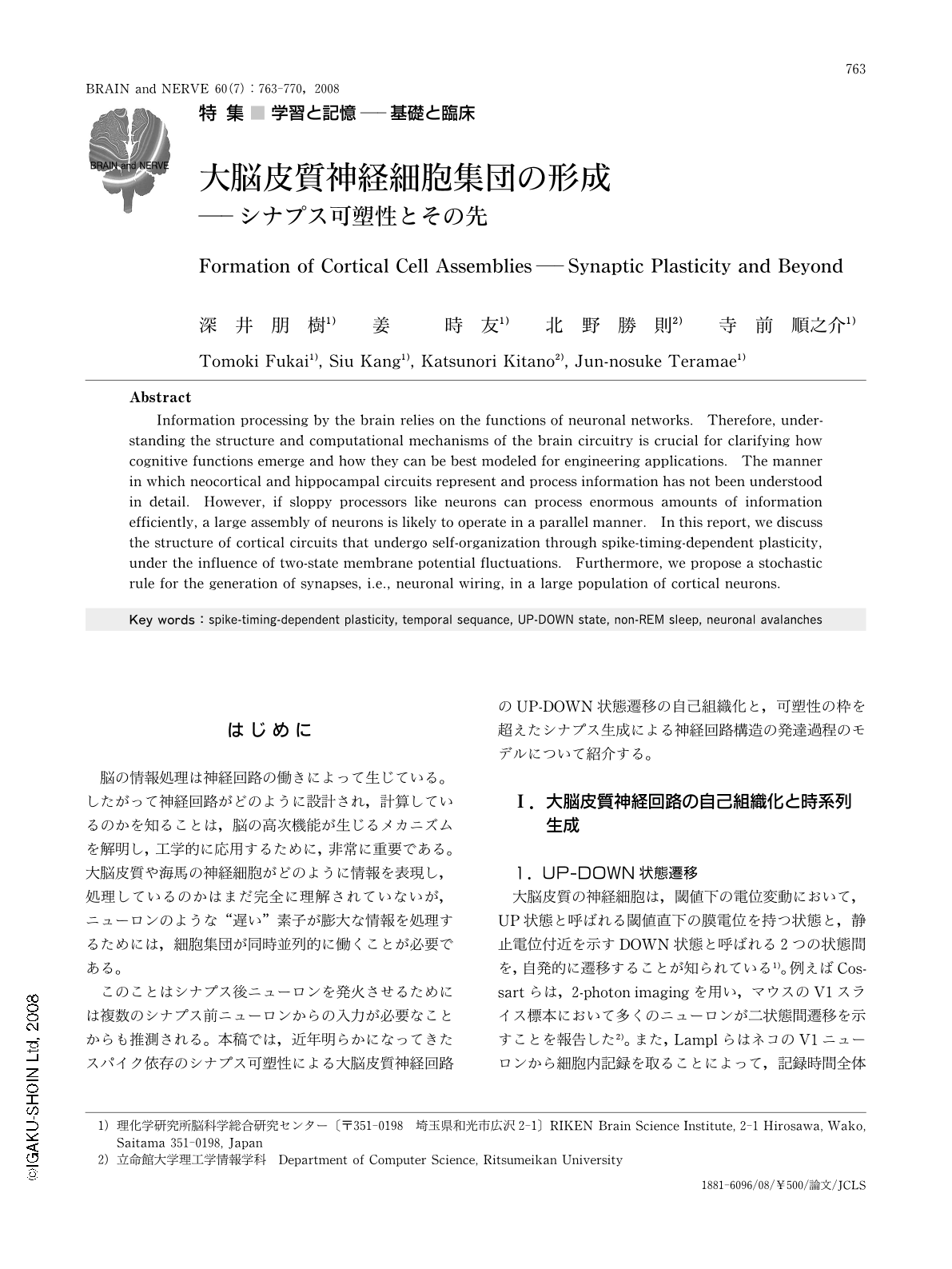Japanese
English
- 有料閲覧
- Abstract 文献概要
- 1ページ目 Look Inside
- 参考文献 Reference
はじめに
脳の情報処理は神経回路の働きによって生じている。したがって神経回路がどのように設計され,計算しているのかを知ることは,脳の高次機能が生じるメカニズムを解明し,工学的に応用するために,非常に重要である。大脳皮質や海馬の神経細胞がどのように情報を表現し,処理しているのかはまだ完全に理解されていないが,ニューロンのような“遅い”素子が膨大な情報を処理するためには,細胞集団が同時並列的に働くことが必要である。
このことはシナプス後ニューロンを発火させるためには複数のシナプス前ニューロンからの入力が必要なことからも推測される。本稿では,近年明らかになってきたスパイク依存のシナプス可塑性による大脳皮質神経回路のUP-DOWN状態遷移の自己組織化と,可塑性の枠を超えたシナプス生成による神経回路構造の発達過程のモデルについて紹介する。
Abstract
Information processing by the brain relies on the functions of neuronal networks. Therefore, understanding the structure and computational mechanisms of the brain circuitry is crucial for clarifying how cognitive functions emerge and how they can be best modeled for engineering applications. The manner in which neocortical and hippocampal circuits represent and process information has not been understood in detail. However, if sloppy processors like neurons can process enormous amounts of information efficiently, a large assembly of neurons is likely to operate in a parallel manner. In this report, we discuss the structure of cortical circuits that undergo self-organization through spike-timing-dependent plasticity, under the influence of two-state membrane potential fluctuations. Furthermore, we propose a stochastic rule for the generation of synapses, i.e., neuronal wiring, in a large population of cortical neurons.

Copyright © 2008, Igaku-Shoin Ltd. All rights reserved.


